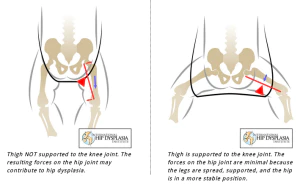Safe Exercise in Pregnancy (part 2)

Hopefully following the last blog post you are now aware of the benefits of exercising in pregnancy and are keen to get going!As mentioned there are a couple of things to consider to maintain safety whilst exercising (for both you and your baby).
The American College of Obstetrics and Gynaecology and Sports Medicine Australia 2015 have the following recommendations for exercising in pregnancy:
1) It’s advised to get a medical screening by your Dr to exclude any complications in your pregnancy that may contraindicate exercise.
2) Women are encouraged to engage in regular, moderate intensity exercise 30mins or more most days of the week. For ladies not used to regular exercise, some good options include: walking, swimming, prenatal yoga/pilates, stationary cycling, low-impact aerobics or strengthening programmes. Otherwise continue with what you always have done whether its spinning, circuit training or jogging.
Upper limits (how hard you can go) have not been established in the literature, however it is important to note that during pregnancy your blood volume increases and therefore your heart rate is naturally higher. Therefore it is best to use breathlessness as your intensity guide (you should still be able to hold a conversation during moderate intensity exercise) If you are unable to hold a conversation during your exercise you are most probably pushing too hard which can mean less blood is flowing to your uterus as is its being utilised by your muscles.
Commencing a structured pelvic floor muscle training programme in pregnancy is also highly recommended. It has been shown to be highly beneficial in reducing urinary incontinence symptoms in late pregnancy and in the post-natal period.
3) If you have any abnormal reactions to exercise (that you wouldn’t experience if not pregnant) you should cease exercise immediately and seek a review with your Doctor (eg. Excessive shortness of breath or fatigue, bleeding, decreased foetal movement).
Some other factors to consider are:
- Maintain adequate hydration/nutrition- remember your nutrient demand has increased since you are creating another human!
- Avoid lying on your back for prolonged periods from 16 weeks onwards (puts added pressure on your circulatory system that can result in low blood pressure and dizziness)
- Heavy weight training will increase intra-abdominal pressure and thus put added strain on your pelvic floor muscles, therefore a strong pelvic floor is essential should you choose to continue lifting heavy weights.
- Wide squats or lunges and unilateral leg exercises may cause shearing forces at the pelvis which can cause pelvic girdle pain.
- High impact exercise can put added pressure on pelvic floor muscles, so be mindful if you continue to run/jump.
- Avoid raising core body temperature >39◦C (spas and saunas, exercising in hot/humid conditions) particularly in the first trimester as this is a sensitive period for organ development and growth of the baby.
Hopefully this has answered some of your questions relating to exercise in pregnancy however if you remain unsure or wish to have a home exercise programme, visiting a specialist Women’s Health physiotherapist can be most beneficial to provide a structured programme tailored to you and your pregnancy and can help prevent pain and complications further on. Alternatively if you are unsure how to start a pelvic floor programme, an assessment can identify any weaknesses or issues with technique you may have which can then aid your pelvic floor recovery post partum.
References:
Guidelines of the American College of Obstetricians and Gynaecologists (ACOG) (2015) Dec Physical activity and exercise during pregnancy and the post partum period. Committee option No 650. https://www.acog.org/Clinical-
Guidance-and-Publications/Committee-Opinions/Committee-on-Obstetric-Practice/Physical-Activity-and-Exercise-During-Pregnancy-and-the-Postpartum-Period?IsMobileSet=false





